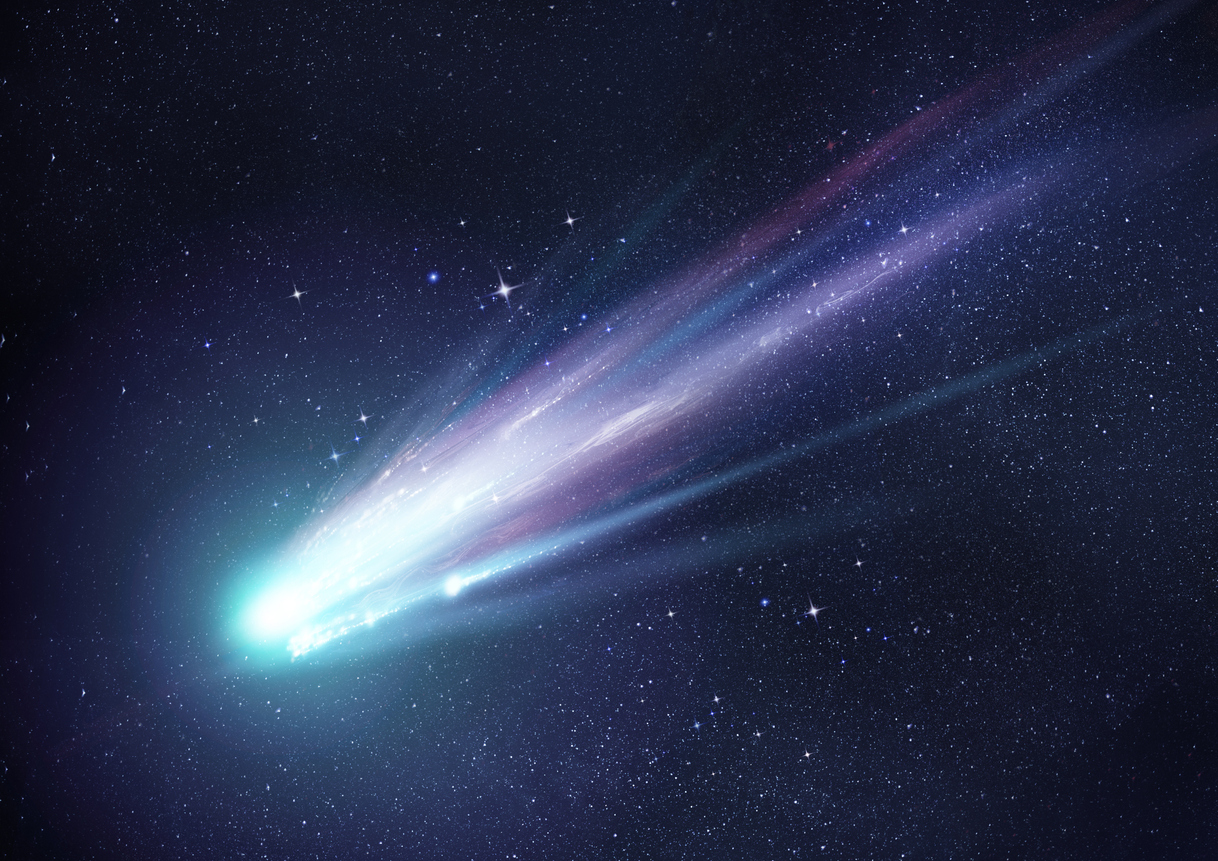The 3I/ATLAS is like a time capsule from another star. It's packed with ices and dust that haven't changed much in billions of years.
Published Nov 03, 2025 | 2:25 PM ⚊ Updated Nov 03, 2025 | 2:25 PM

Representational image. Credit: iStock
Synopsis: Comet 3I/ATLAS, the third interstellar visitor, discovered by Chile’s ATLAS telescope, is a billions-year-old icy relic from another star. Zooming past the Sun on 29 October, it spews water vapor, abundant CO₂, and rare gases. This tiny, spinning nucleus offers pristine clues to alien planet formation, thrilling scientists worldwide.
Imagine a giant, dirty snowball hurtling through space from a faraway galaxy, zipping past the Sun like a solo backpacker in hurry. That’s Comet 3I/ATLAS – only the third confirmed “interstellar” comet we’ve ever spotted in our Solar System. Unlike the comets born near Sun, this one is a true alien, not stuck in the orbit here.
It was discovered just this May and has been putting on a show for scientists and space enthusiasts alike.
Astronomers using a telescope in Chile called ATLAS (short for Asteroid Terrestrial-impact Last Alert System) first spotted the comet on 1 July, 2025. It looked like a fuzzy blob in the sky, a sign it was active and releasing gas and dust.
🛰️ 3I/ATLAS: The Visitor Approaches
Something entered our solar system. It wasn’t built here.
It wasn’t invited.
And it isn’t leaving.All we know is a name: 3I/Atlas.
🌌 Join the transmission. Follow the signal.#3IAtlas
— 3I/ATLAS (@3IAtlas_Anomaly) August 30, 2025
They dug up older photos from other telescopes and traced it back to May. By mid-July, it was proved that 3I/ATLAS is from outside our Solar System – moving way too fast to stay here.
Also, initial studies point towards 3I/ATLAS’ “old age”. This comet is likely between 3 and 14 billion years old, making it older than our Solar System (which is 4.6 billion years old). Not prizes for guessing, this comet is the oldest we’ve ever seen.
> The fact that 3I/Atlas is 7–10 billion years old and older than our entire solar system genuinely blows my mind.
– It could just be a random comet passing by but it’s been wandering space since before the Sun even existed. Crazy Shit #3IATLAS pic.twitter.com/AQ3L6KWflp
— Orion (@OrionAnkit) October 30, 2025
The 3I/ATLAS zipped closest to the Sun on 29 October, about 126 million miles away. It swung by Mars in early October and will bid adieu to Earth from about 54 million miles away in December. After that, it’ll head back into deep space forever, speeding at up to 68 km/second!
The heart of 3I/ATLAS, called its nucleus, is tiny – probably less than a mile across – like a small mountain. It’s spinning every 16 hours.
As ATLAS got closer to the Sun’s heat, the ice inside started melting into gas, creating a cloudy “coma” envelope around it that’s tens of thousands of miles wide. It even grew faint tails of dust stretching over 60,000 miles – one pointing away from the Sun, another toward it.
Telescopes like Hubble and the James Webb Space Telescope snapped pictures showing a teardrop-shaped dust cloud. From Mars, European spacecraft caught glimpses of the fuzzy coma, though it was too dim for super-clear shots. NASA’s rovers on the Red Planet helped out too.
The 3I/ATLAS is like a time capsule from another star. It’s packed with ices and dust that haven’t changed much in billions of years. Scientists used special cameras to “read” its light and figure out what’s in it.
And, guess what? This comet has water too! Yes, as per spacedaily.com, this interstellar visitor is loaded with ice that turns into vapour as it warms up. Space telescopes spotted water vapour gushing out at about 6.6 kg/second. They even saw “OH” molecules, which form when sunlight breaks apart water. This started happening unusually early, when the comet was still far from the Sun.
But water isn’t alone. The comet is super-rich in carbon dioxide, spewing out 129 kg/second – way more than usual compared to water (about 8 times more CO₂ than typical comets). There’s also carbon monoxide, a bit of smelly carbonyl sulfide, and traces of cyanide and nickel gases. The dust is reddish and tiny, full of organic stuff zapped by space radiation over eons.
Comet 3I/ATLAS gives us a peek at how stuff forms around other stars. Its weird mix – lots of CO₂ and water – might hint at different “recipes” for planet-building in faraway systems.
Space enthusiasts and scientists are holding their horses and avoiding all wild guesses. However, they are thrilled because 3I/ATLAS is so fresh and untouched.
The comet is fading into the space as we speak, but telescopes will keep eyeing it. We never know what new “secrets” might pop out from this intergalactic nippy guest!
